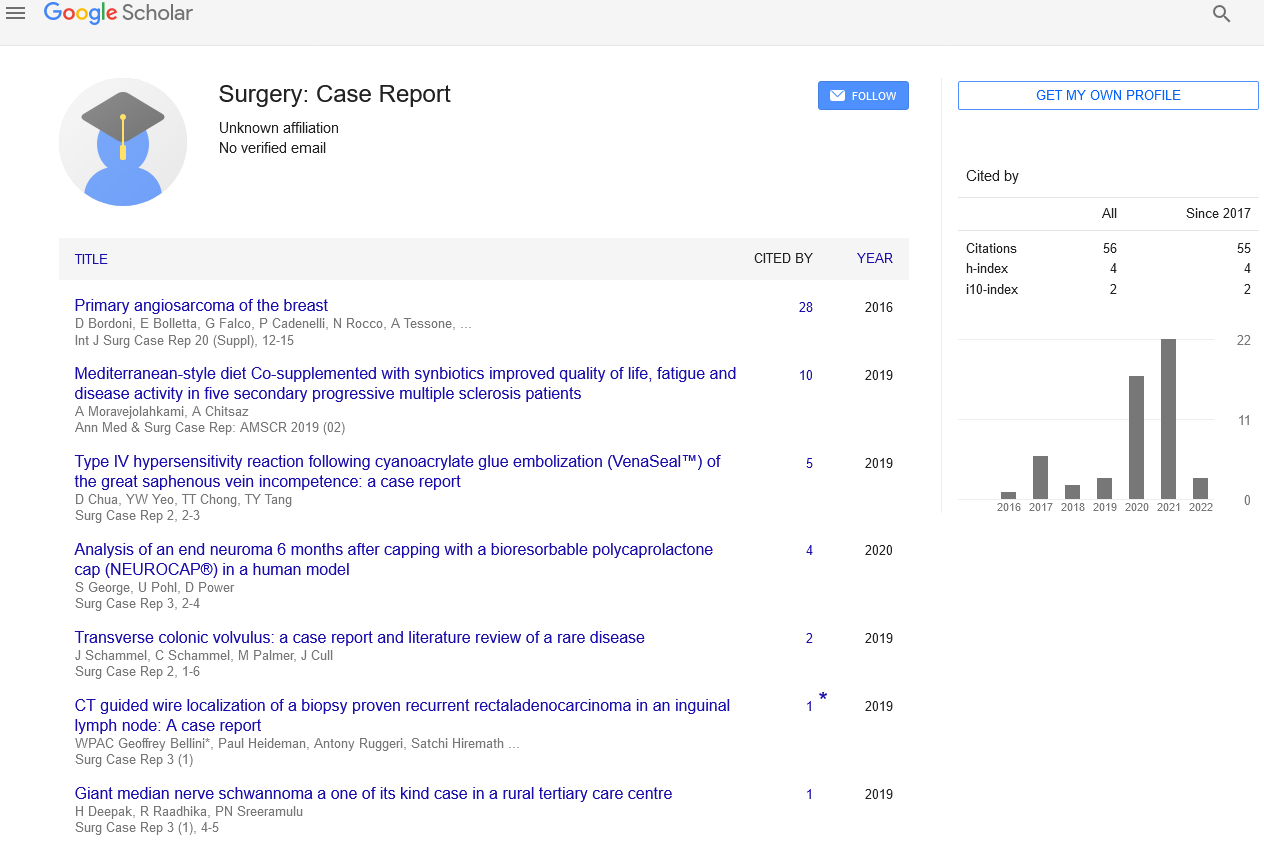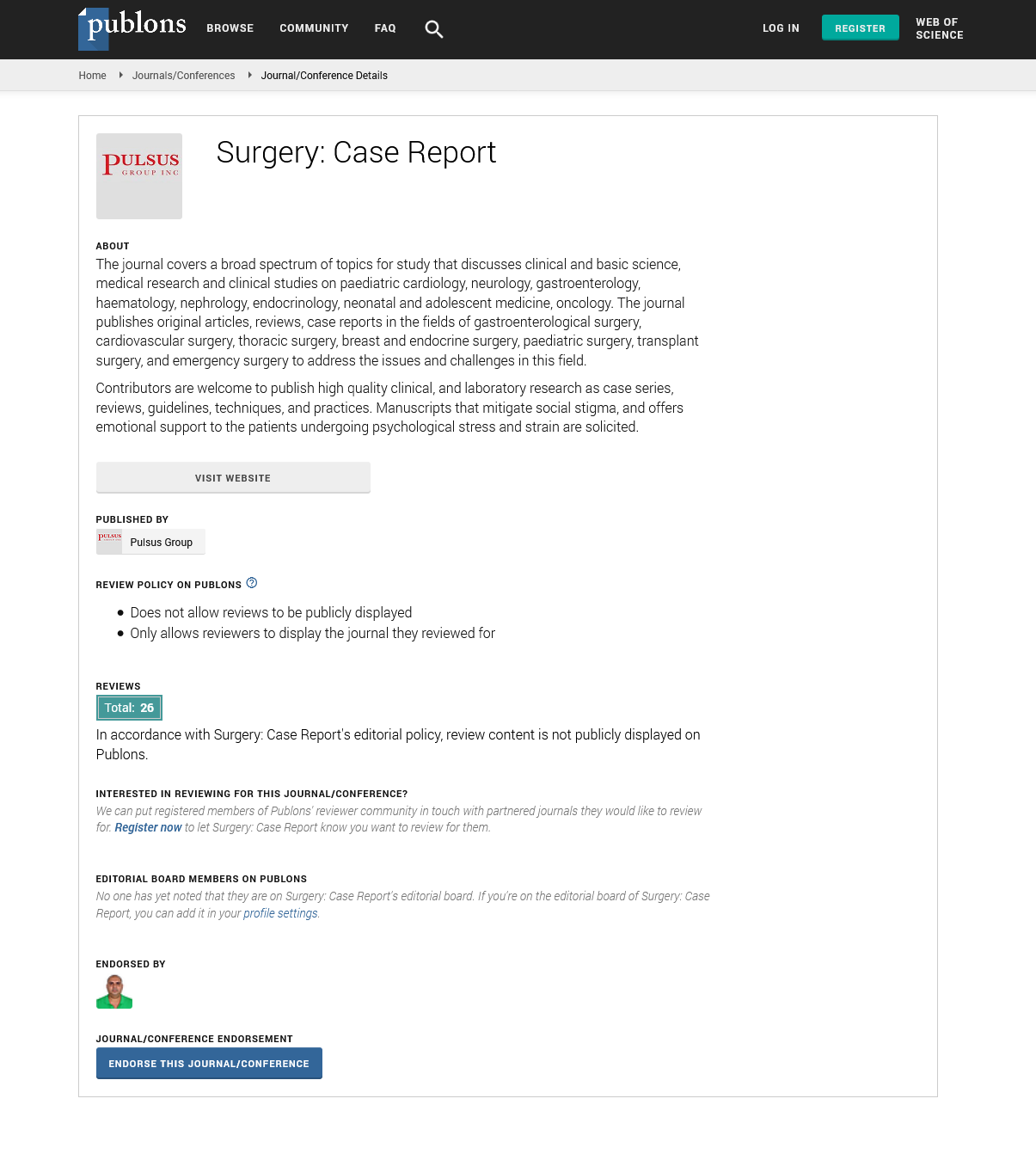Scope of endocrine surgery in modern times
Received: 02-Nov-2021 Accepted Date: Nov 16, 2021; Published: 25-Nov-2021
This open-access article is distributed under the terms of the Creative Commons Attribution Non-Commercial License (CC BY-NC) (http://creativecommons.org/licenses/by-nc/4.0/), which permits reuse, distribution and reproduction of the article, provided that the original work is properly cited and the reuse is restricted to noncommercial purposes. For commercial reuse, contact reprints@pulsus.com
Commentary
The discipline of endocrine surgery is defined by the operational treatment of benign and malignant neoplasms of the thyroid gland, parathyroid glands, adrenal glands, pancreas, and gut neuroendocrine tissue. Over the last decade, advances in molecular genetics, hormone tests, and less invasive procedures have transformed the field of endocrine surgery. Endocrine medicine has become a very complicated specialty in its own right as a result of this. Surgical operations, as well as developments in surgical methods, have become an important element of this progression. Endocrine surgery is now far more specialized than it was previously. This specialty strives to encourage more precise, less intrusive, and less hazardous techniques that are equally, if not more, beneficial in the goal of high-quality care.
The most prevalent neoplasm treated by endocrine surgeons is thyroid cancer. In earlier lesions with uncertain cytology, major developments in the molecular genetics offered by commercial laboratories in the last three years have resulted in a fairly defined chance of malignancy. Lymph node management, as well as novel features of postoperative care, are discussed. When to operate, how to use intraoperative Parathyroid Hormone (PTH) values, and what surgery to do are all controversial topics in the treatment of hyperparathyroidism, and all of these are discussed by experts in the field. Pheochromocytomas and paragangliomas have seen numerous improvements in molecular genetics that influence both diagnosis and therapy. It is being studied how to operate on benign and malignant disorders. Neuroendocrine tumours of the gut and pancreas are a condition that is becoming more common across the world, and the diagnosis, imaging, and surgical therapy are now being addressed.
The frozen slice was used to examine the adequacy of parathyroid excision after parathyroid gland surgery. Intraoperative Parathyroid Hormone (IOPTH) measurements have transformed this procedure, converting IOPTH into a kind of “biochemical frozen section.” According to researchers, this approach has its own set of drawbacks, including cost, the time it takes to get a test result, and the difficulty of defining thresholds that discriminate effectively between single-gland and multi-gland disorders. As experts have pointed out, surgical skill is still crucial in this situation. Following a thorough review of the current literature, the following conclusions can be drawn: for initial parathyroid exploration, an independent surgeon should have no fewer than 30 parathyroid operations under his or her belt, ideally 60 or more; and for remedial parathyroid exploration, a track record of no fewer than 15 cases, ideally 30 or more. Overall, this suggestion looks to be sensible.
Endocrine surgeons’ areas of expertise are widely debated. Visceral surgeons and urologists, both familiar with abdominal and retroperitoneal anatomy, have stepped into this arena. At this point, the volume-outcome link, which has been revisited by a number of scholars, has become extremely significant. These authors found enough data to recommend that patients should be operated on by high-volume surgeons who do at least six adrenalectomies per year, based on decreased morbidity, mortality, and cost. Over the last two decades, as the number of laparoscopic and retroperitoneoscopic adrenalectomies has increased, so has the need for high-quality surgical treatment. As a result, patients with adrenal illness may benefit from referrals to high-volume endocrine surgeons.
Non-secreting parasympathetic paragangliomas (PGL) of the neck and catecholamine-producing sympathetic paragangliomas (PGL) of the belly and pelvis are two of the most uncommon endocrine illnesses encountered by endocrine surgeons. PGL is caused by 40% of germ line mutations, with genotype phenotype correlations similar to those reported in males. Hereditary PGL can be challenging for endocrine teams comprising of geneticists, endocrinologists, radiologists, pathologists, anaesthetists, and surgeons because to variability in presentation, anatomic location, multifocalit, and the inherent risk of malignancy. Scientists examine the most recent research on PGLs in the neck, chest, abdomen, and retro-peritoneum. To personalize surgical therapy and follow-up, these authors stress the necessity of frequent genetic screening and morphological-functional imaging.






